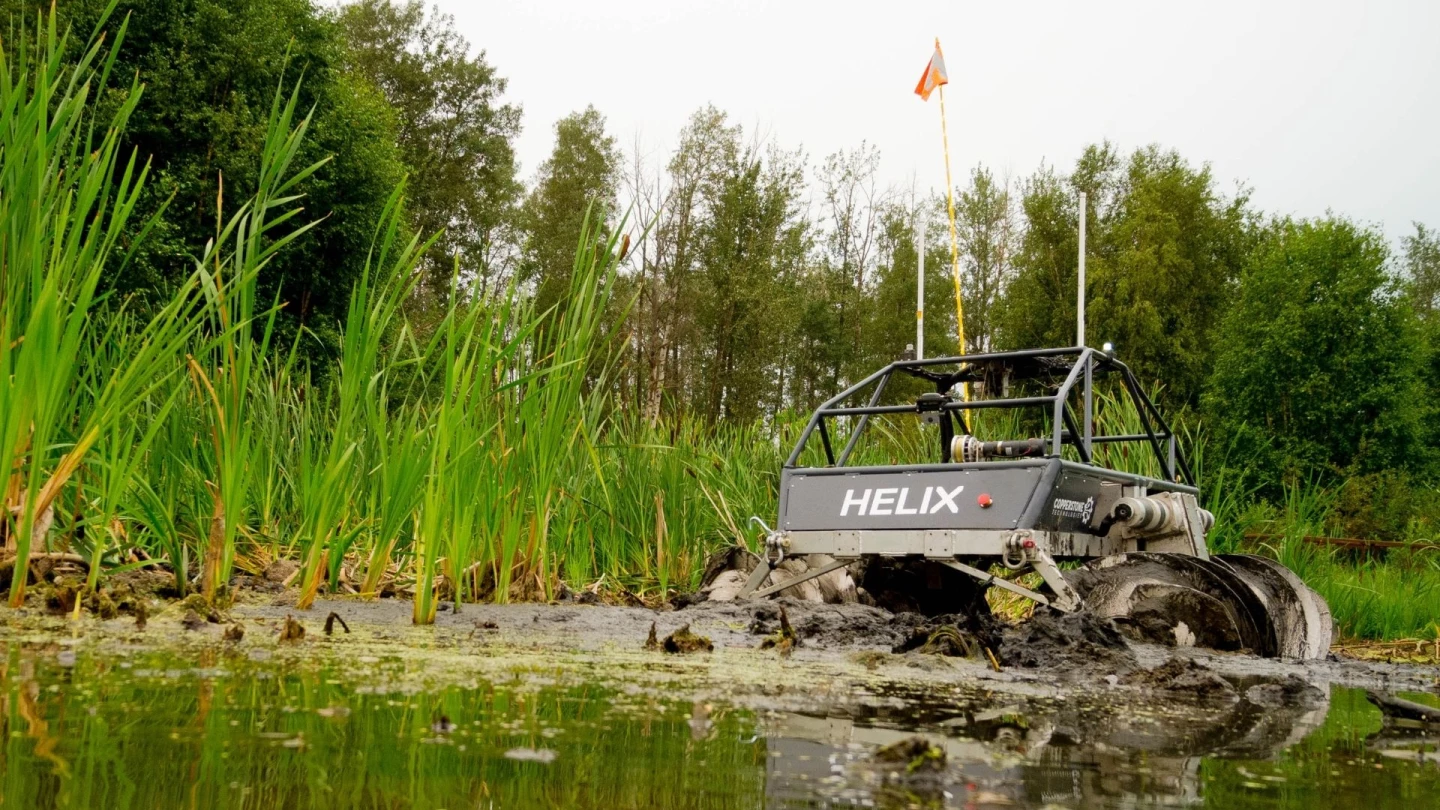When mines extract oil or ore from other materials, they often generate liquid waste known as tailings. This waste is stored in tailings ponds, which have to be continuously monitored – and that's where the omnidirectional, amphibious Helix Neptune robot is designed to come in.
Manufactured by Canadian robotics company Copperstone Technologies, the battery-powered Neptune doesn't have wheels or treads, but instead moves along in all directions on four screw-shaped pontoons. As those pontoons independently rotate, they move the robot across dry soil, mud, and the surface of the water in tailings ponds.
While such a screw-drive system isn't a common sight, it's certainly also not unprecedented. Over the years, we've seen it applied to everything from land-going yachts to hill-climbing snowboards to Titan-exploring rovers.
As the Neptune travels onto and across the ponds – either autonomously or by remote control – it uses onboard sensors to gather water data such as chemical and oxygen content, along with turbidity and salinity. If it's determined that enough of the pollutants have settled to the bottom of the pond (forming a sludge), some of the remaining water could be reclaimed for reuse in the mine.

Additionally, the robot measures the depth of the water. This is an important piece of information, as the water forms a "cap" that covers the toxic sludge beneath. Needless to say, that cap has to be kept at a given minimum depth, to keep the sludge out of contact with the surrounding environment.
The Neptune can also collect water/sludge samples, both at the surface and at a variety of depths, using a powered winch … but couldn't humans perform all these tasks?
"In some ponds, it is possible to send a person in a boat. It's a huge operation, because you have to have a backup boat, and there are all these safety concerns," Copperstone co-founder Nicolas Olmedo told us. "When something happens and somebody gets hurt, it's not allowed anymore, so they have to look for other solutions – and that's where we would come in."
That said, the robot does have other applications. Equipped with an ice drill, for instance, it can be used to check the thickness of potentially treacherous ice roads on frozen lakes. It could also be used to perform surveillance or reconnaissance in difficult-to-reach locations.

The Neptune was first introduced a year ago, and has since been utilized by a number of clients in various countries. Copperstone is currently offering the technology in robot-as-a-service form, wherein operators will come in and perform tasks for clients, instead of having them buy a robot of their own.
This Thursday in the city of Montreal, the company received a Mitacs Outstanding Entrepreneur Award in recognition of its robotics system. Mitacs is a government-funded non-profit organization, which seeks to foster technical innovation in Canada.
You can see the Helix Neptune in action, in the video below.
Sources: Mitacs, Copperstone Technologies







